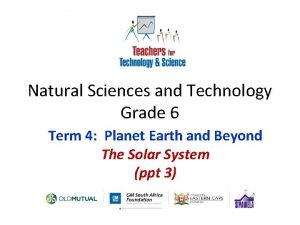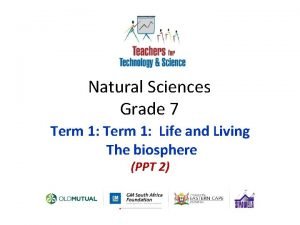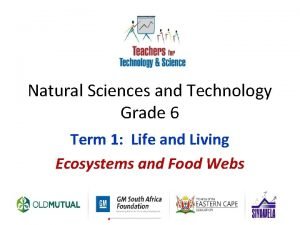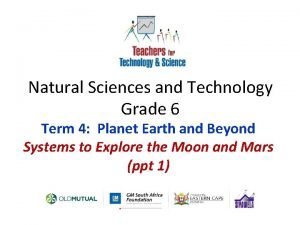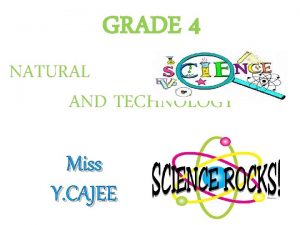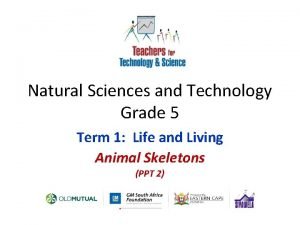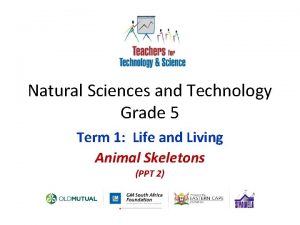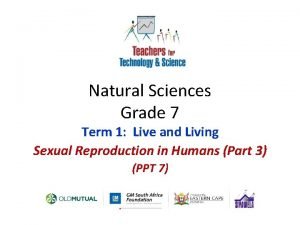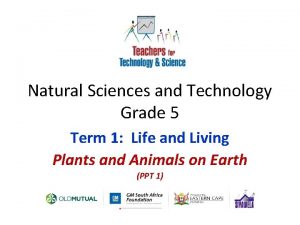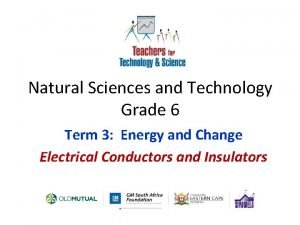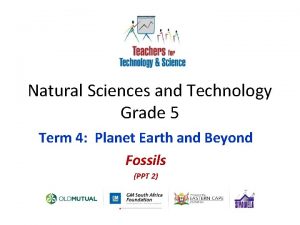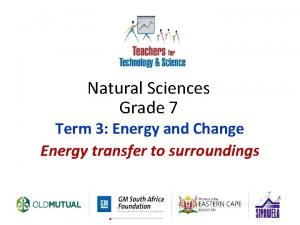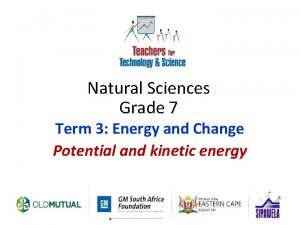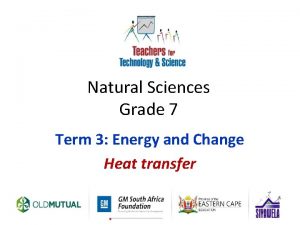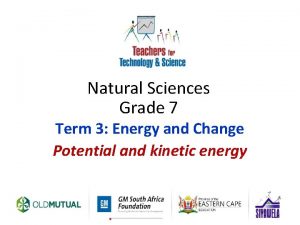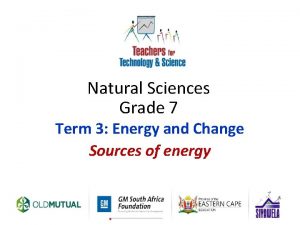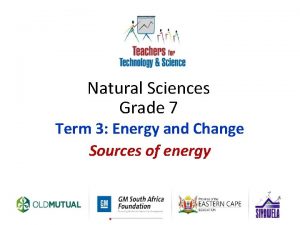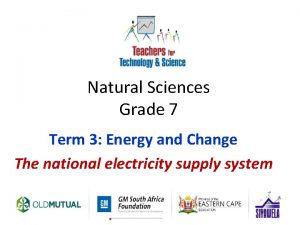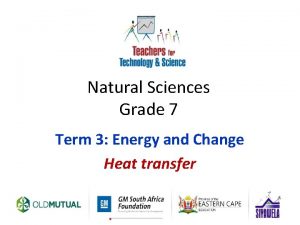Natural Sciences Grade 7 Term 3 Energy and




![Mechanical systems • Energy in cyclist’s body [potential energy] → boy’s legs and feet Mechanical systems • Energy in cyclist’s body [potential energy] → boy’s legs and feet](https://slidetodoc.com/presentation_image_h/0e7df75c046ff86254157695d9fae880/image-5.jpg)

![Thermal (heating) systems • Stove plate [potential energy] → stove’s plate is switched on Thermal (heating) systems • Stove plate [potential energy] → stove’s plate is switched on](https://slidetodoc.com/presentation_image_h/0e7df75c046ff86254157695d9fae880/image-7.jpg)









- Slides: 16

Natural Sciences Grade 7 Term 3: Energy and Change Potential and kinetic energy

Topic 2 Potential and Kinetic Energy Potential and kinetic energy in mechanical systems Natural Sciences - Grade 7

Potential and kinetic energy in mechanical systems: • Mechanical systems need energy so that the system’s different parts can move. • Machines and tools can be used to do the work for us. • Potential energy can be changed to kinetic energy in a mechanical system. • All the different parts interact in a mechanism which is based on mechanical principles. Natural Sciences - Grade 7

Mechanical systems • These are systems in which the input energy involves motors, machines, springs, stretched elastics, crane lifting a heavy generator, hitting a cricket ball with a cricket bat, bending a plastic ruler to shoot a small paper ball, a pulley lifting a tin of paint, scissors cutting paper, etc. Natural Sciences - Grade 7
![Mechanical systems Energy in cyclists body potential energy boys legs and feet Mechanical systems • Energy in cyclist’s body [potential energy] → boy’s legs and feet](https://slidetodoc.com/presentation_image_h/0e7df75c046ff86254157695d9fae880/image-5.jpg)
Mechanical systems • Energy in cyclist’s body [potential energy] → boy’s legs and feet move the pedals → pedals turn the cog and chain → chain turns the rear [back] cog → rear cog turns the wheels → bicycle moves forward [kinetic energy]. Natural Sciences - Grade 7

Thermal (heating) systems • These are systems in which heat is the input energy – for example heat from a candle, a burner or a stove. It could also be the transfer of heat from a hot cup of tea to the air as it cools. Natural Sciences - Grade 7
![Thermal heating systems Stove plate potential energy stoves plate is switched on Thermal (heating) systems • Stove plate [potential energy] → stove’s plate is switched on](https://slidetodoc.com/presentation_image_h/0e7df75c046ff86254157695d9fae880/image-7.jpg)
Thermal (heating) systems • Stove plate [potential energy] → stove’s plate is switched on and heats up → heat of the stove’s plate heats the pot → heat of the pot heats the soup → soup gets hotter and starts to bubble and boil [kinetic energy Natural Sciences - Grade 7

Thermal (heating) systems • A geyser stores heat energy in the hot water. Natural Sciences - Grade 7

Electrical systems • Electrical systems use electrical energy to cause change or to do work. • These are systems in which electricity is the input energy such as a cell, battery or main electricity being used to operate an appliance. • Batteries store electrical energy in the chemicals that are inside the battery. Natural Sciences - Grade 7

Electrical systems Natural Sciences - Grade 7

Electrical systems • The electrical energy flows / moves through the electric circuits and it is then transferred to the output devices [bulbs; motors and buzzers]. • A torch battery’s energy moves to the bulb to make the beam of light. Natural Sciences - Grade 7

Sound energy • Anything that makes a noise because it is moving, is an example of mechanical energy. • Sound energy is the energy produced by sound vibrations as they travel through water, air or any other space. • The sound waves bounce / amplify as it moves. • The sound waves, like the ripples in a lake, become weaker the farther they travel. • The energy of the waves becomes more spread out. Natural Sciences - Grade 7

Sound energy • Examples: car hooter, piano key, baby rattle, gun shot, etc. Natural Sciences - Grade 7

Biological systems • Every living creature needs energy for their digestion and respiration. • The Sun supplies biological energy and it is stored in the form of chemical energy in plants and animals. Natural Sciences - Grade 7

Biological systems • The process photosynthesis enables plants to convert the solar energy to chemical energy. Natural Sciences - Grade 7

Biological systems • The input energy comes from a plant or animal which is eaten and it provides the biological energy to the animal or person who is eating. • The energy in the food that you eat is used to change your position when you run, walk, jog or move. • Energy is also used to make you think, breath and sustain all bodily processes. Natural Sciences - Grade 7
 Grade 6 natural science term 4
Grade 6 natural science term 4 Natural science grade 6 lesson plans term 2
Natural science grade 6 lesson plans term 2 The biosphere grade 7
The biosphere grade 7 Grade 7 ns term 4
Grade 7 ns term 4 What is energy grade 7
What is energy grade 7 Human sciences vs natural sciences tok
Human sciences vs natural sciences tok Natural science grade 7 term 4 notes
Natural science grade 7 term 4 notes Technology grade 7 term 3 notes
Technology grade 7 term 3 notes Different ecosystems grade 6
Different ecosystems grade 6 Natural science grade 6 term 4
Natural science grade 6 term 4 Grade 4 nst term 3 practical task
Grade 4 nst term 3 practical task Natural science grade 5 term 1
Natural science grade 5 term 1 Grade 5 natural science
Grade 5 natural science Natural science grade 7
Natural science grade 7 Grade 5 natural science term 1
Grade 5 natural science term 1 Natural science grade 6 term 3
Natural science grade 6 term 3 Natural science grade 5
Natural science grade 5
